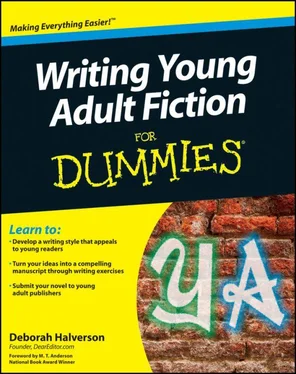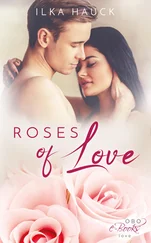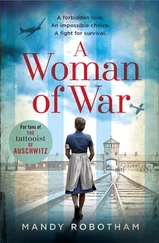Over the years, young adult fiction has developed into an age-defying literature, most significantly with the publication of J. K. Rowling’s famous Harry Potter series. When that now legendary wizard hit the scene in 1997, kids suddenly found themselves competing with adults twice or three times their age for the front of the line at Harry Potter launch parties. And then with the explosion of paranormal hits and mainstream crossovers in the early 2000s, YA fiction attained a new level of prosperity and audience appeal. Wonderfully, the classics still hold strong, creating a rich market for young adult fiction.
And let’s not forget the Nostalgia Factor. Nostalgia calls adults back to the books they remember from their own teen years, like Katherine Paterson’s Bridge to Terabithia or maybe their favorite issue books from the 1970s. Adults reread these books and share them with the young adults in their lives.
Maneuvering through the Challenges
With such a wide readership, writers of young adult fiction have great opportunities. They also have challenges that writers of adult fiction don’t toil against: reluctant readers and gatekeepers.
Reaching reluctant readers
In education and publishing circles, reluctant readers refers to those teens and tweens who aren’t so keen on spending their free time — or their assigned time, for that matter — with a book. What makes them so reluctant? Many simply haven’t yet found joy in reading. Or they see reading as a chore when they could be indulging in “fun” things (such as TV, movies, video games, hobbies, and activities with friends and family) or going to school, doing homework, and participating in extracurricular activities. And then, of course, some young people simply lack solid reading skills.
Reluctant readers make up much of your potential audience, especially in the middle grade realm. You can take this into account in your fiction by
 Putting big words in contexts that make their meaning clear:Some kids love consulting their dictionaries, but reluctant readers aren’t in that group.
Putting big words in contexts that make their meaning clear:Some kids love consulting their dictionaries, but reluctant readers aren’t in that group.
 Writing clear, tight sentences:Even the best readers don’t want to fight their way to the meaning. Keep it accessible.
Writing clear, tight sentences:Even the best readers don’t want to fight their way to the meaning. Keep it accessible.
 Keeping up a fast pace:Young readers generally don’t have the patience of adults, who may stick with a slow-starting book because they’ve heard great things about it or are especially intrigued by the promises in the jacket flap copy.
Keeping up a fast pace:Young readers generally don’t have the patience of adults, who may stick with a slow-starting book because they’ve heard great things about it or are especially intrigued by the promises in the jacket flap copy.
 Hooking young readers instantly:Help young readers get emotionally invested right off the bat… or risk losing them.
Hooking young readers instantly:Help young readers get emotionally invested right off the bat… or risk losing them.
Writing stories with high teen-appeal is especially important with reluctant readers, so give careful consideration to your target audience; identifying your target audience is a vital prewriting phase I cover in Chapter 2. Give these kids a reason to read instead of succumbing to frustration or to the million other things screaming for their attention.
 You may hear of a subcategory of young adult fiction called Hi/Lo , as in high interest, low reading level. These books are created specifically for reluctant readers. They’re packaged to look like any other book, but the text is written with their needs in mind. The stories are short, from 400 to 1,200 words, and they have many illustrations. Hi/Lo books feature distinct characters who are quickly characterized — no going on and on about anything in a Hi/Lo, which uses quick pacing to keep interest. Sentence structure is short, simple, and clear. Storylines are straightforward and avoid jumps in point of view or time. Because boys are three times more likely to be reluctant readers than girls, Hi/Los are commonly geared to boy interests, emphasizing funny situations, sports, disasters, teen conflict, family/friend problems, and street kids and gangs, and they embrace the sci-fi, mystery/spy, and adventure genres. Hi/Lo is a small, specialty subcategory. I focus this book on trade fiction, or the general market, which sells through standard outlets to the general reader.
You may hear of a subcategory of young adult fiction called Hi/Lo , as in high interest, low reading level. These books are created specifically for reluctant readers. They’re packaged to look like any other book, but the text is written with their needs in mind. The stories are short, from 400 to 1,200 words, and they have many illustrations. Hi/Lo books feature distinct characters who are quickly characterized — no going on and on about anything in a Hi/Lo, which uses quick pacing to keep interest. Sentence structure is short, simple, and clear. Storylines are straightforward and avoid jumps in point of view or time. Because boys are three times more likely to be reluctant readers than girls, Hi/Los are commonly geared to boy interests, emphasizing funny situations, sports, disasters, teen conflict, family/friend problems, and street kids and gangs, and they embrace the sci-fi, mystery/spy, and adventure genres. Hi/Lo is a small, specialty subcategory. I focus this book on trade fiction, or the general market, which sells through standard outlets to the general reader.
Pacifying gatekeepers
Unlike writers for adults, you don’t have direct access to your audience. Instead, you and your novel must wend your way through a group of people who in one manner or another screen books before they reach the kids they’re written for. I’m talking about librarians, teachers, parents, book reviewers, even booksellers. These are the gatekeepers of young adult fiction. Every one of them has opinions about what young people should read, with some of those gatekeepers holding the purse strings.
This means you have to please a lot of people before you ever get to your primary audience. Edgy stories that offer rougher views of the world may not squeeze through the filters. Language, sex, and violence all get careful screening. In principle, that’s not necessarily a bad thing; adults should be aware of what the young people under their wings are reading. But it does add a many-people-deep wall that writers for adults don’t have to work around… or under or over or right through in some paper-and-ink version of the old Red Rover child’s game.
Cases of banned books and censorship arguments periodically crop up in the young adult fiction news, reminding the world of the most ardent gatekeepers. But your chief awareness should lie at the level of everyday screening for age and individual appropriateness. Keep in mind the role of gatekeepers in your readers’ lives as you make decisions about your story’s content and word choice. Young adult novelists must by default consider their gate-keepers… but whether you choose to pacify gatekeepers, work within general boundaries, or blow the boundaries apart is completely up to you.
Understanding types of children’s book publishers
Most people can name some big publishers, but the children’s book publishing industry also has specialty publishers who target specific customers through various outlets. You should know the differences among the players if you’re to become an effective player. Here’s the lineup:
 Traditional trade publishers:These are the companies most people think of when they hear “publisher.” Sales reps market their books to bookstores, libraries, and schools, and the books are reviewed in dedicated book media such as School Library Journal. These houses operate with a traditional publishing model, which pays authors advances against royalties while handling the editing, marketing, sales, order fulfillment, and monies. Smaller houses may offer royalties only, no advances. In most cases, the author holds the copyright to his story. (More on advances, royalties, and copyright in Chapter 17.)
Traditional trade publishers:These are the companies most people think of when they hear “publisher.” Sales reps market their books to bookstores, libraries, and schools, and the books are reviewed in dedicated book media such as School Library Journal. These houses operate with a traditional publishing model, which pays authors advances against royalties while handling the editing, marketing, sales, order fulfillment, and monies. Smaller houses may offer royalties only, no advances. In most cases, the author holds the copyright to his story. (More on advances, royalties, and copyright in Chapter 17.)
 Mass-market publishers:These companies have the same advance and royalty structure as traditional houses, but the copyright may be in the company’s name, or the author and house may have a joint copyright. Mass-market publishers may also publish the paperback editions of novels originally published in hardcover by a traditional trade publisher. These books are marketed to and stocked by bookstores and discount retailers such as Wal-Mart. These books get reviewed in some dedicated book media.
Mass-market publishers:These companies have the same advance and royalty structure as traditional houses, but the copyright may be in the company’s name, or the author and house may have a joint copyright. Mass-market publishers may also publish the paperback editions of novels originally published in hardcover by a traditional trade publisher. These books are marketed to and stocked by bookstores and discount retailers such as Wal-Mart. These books get reviewed in some dedicated book media.
Читать дальше
Конец ознакомительного отрывка
Купить книгу

 Putting big words in contexts that make their meaning clear:Some kids love consulting their dictionaries, but reluctant readers aren’t in that group.
Putting big words in contexts that make their meaning clear:Some kids love consulting their dictionaries, but reluctant readers aren’t in that group. You may hear of a subcategory of young adult fiction called Hi/Lo , as in high interest, low reading level. These books are created specifically for reluctant readers. They’re packaged to look like any other book, but the text is written with their needs in mind. The stories are short, from 400 to 1,200 words, and they have many illustrations. Hi/Lo books feature distinct characters who are quickly characterized — no going on and on about anything in a Hi/Lo, which uses quick pacing to keep interest. Sentence structure is short, simple, and clear. Storylines are straightforward and avoid jumps in point of view or time. Because boys are three times more likely to be reluctant readers than girls, Hi/Los are commonly geared to boy interests, emphasizing funny situations, sports, disasters, teen conflict, family/friend problems, and street kids and gangs, and they embrace the sci-fi, mystery/spy, and adventure genres. Hi/Lo is a small, specialty subcategory. I focus this book on trade fiction, or the general market, which sells through standard outlets to the general reader.
You may hear of a subcategory of young adult fiction called Hi/Lo , as in high interest, low reading level. These books are created specifically for reluctant readers. They’re packaged to look like any other book, but the text is written with their needs in mind. The stories are short, from 400 to 1,200 words, and they have many illustrations. Hi/Lo books feature distinct characters who are quickly characterized — no going on and on about anything in a Hi/Lo, which uses quick pacing to keep interest. Sentence structure is short, simple, and clear. Storylines are straightforward and avoid jumps in point of view or time. Because boys are three times more likely to be reluctant readers than girls, Hi/Los are commonly geared to boy interests, emphasizing funny situations, sports, disasters, teen conflict, family/friend problems, and street kids and gangs, and they embrace the sci-fi, mystery/spy, and adventure genres. Hi/Lo is a small, specialty subcategory. I focus this book on trade fiction, or the general market, which sells through standard outlets to the general reader.










